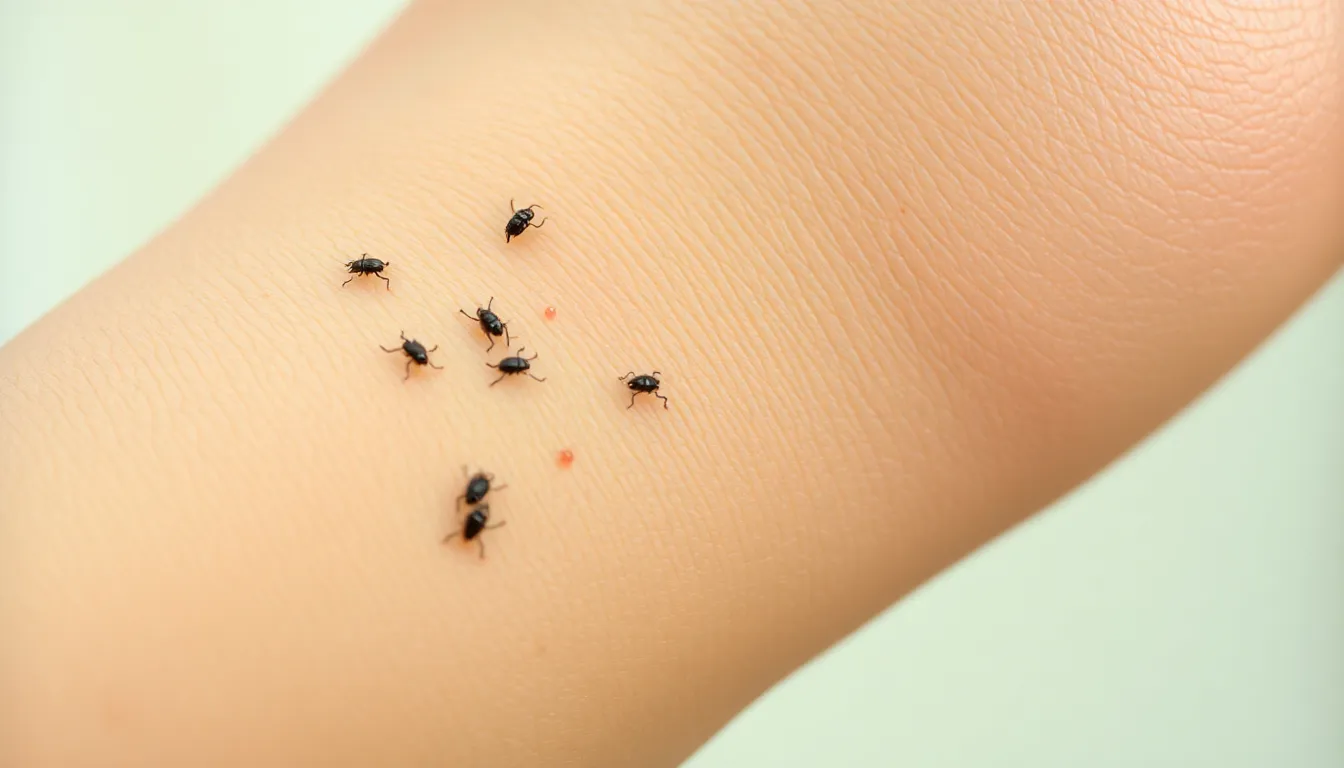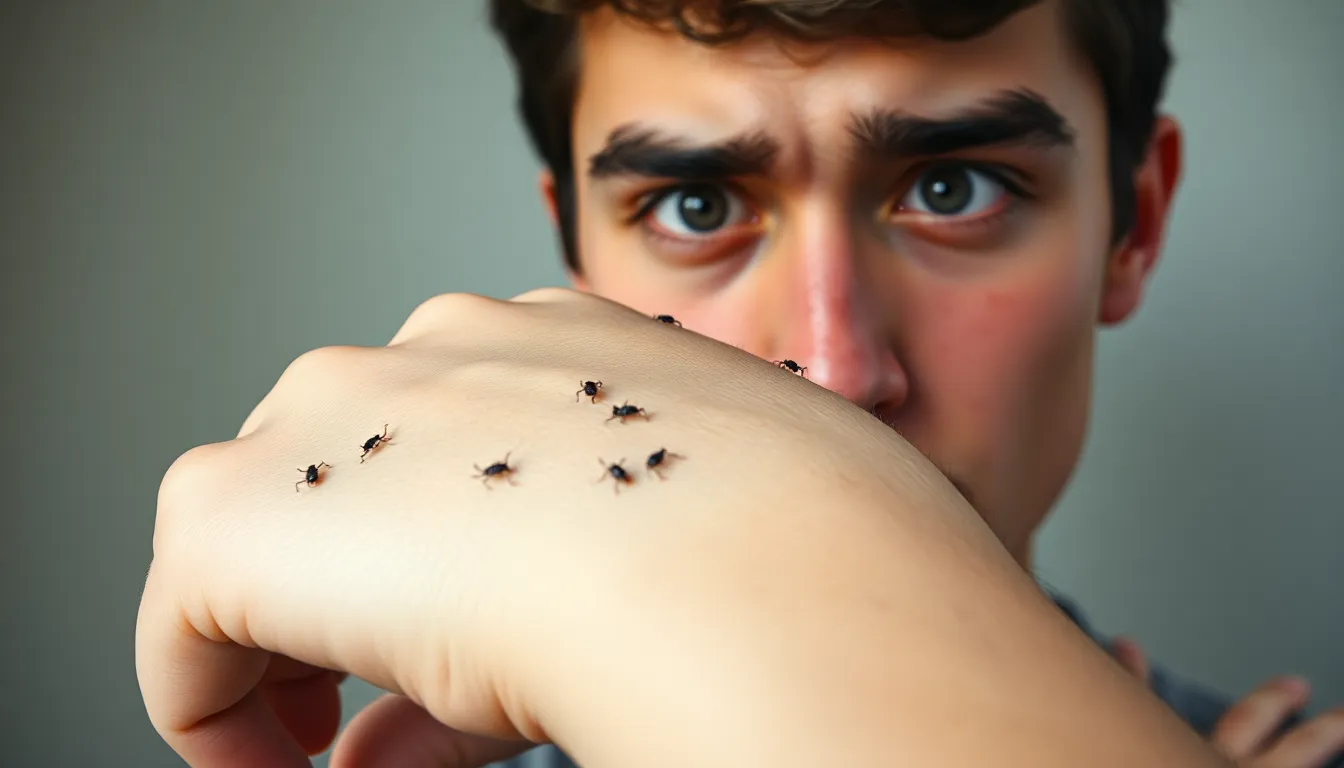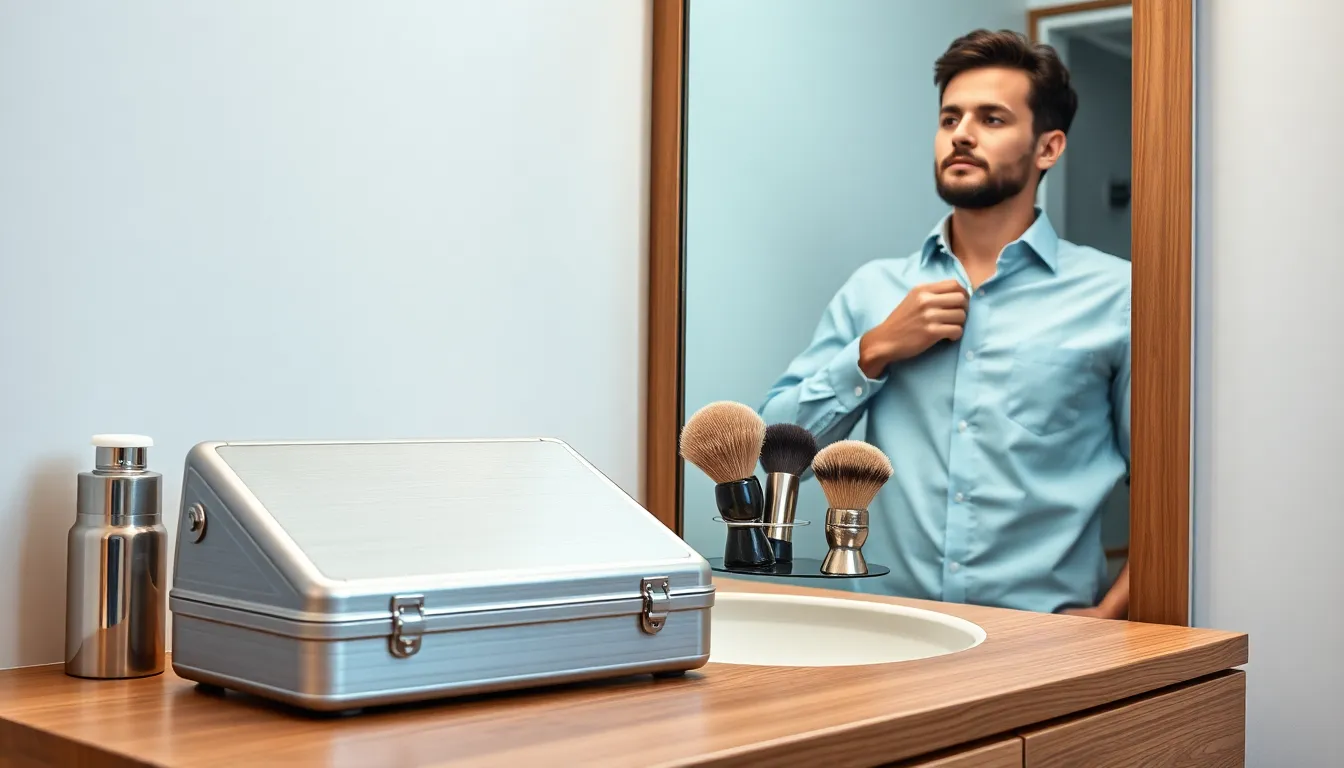Encountering tiny black bugs on the skin can be unsettling and confusing. Many people wonder if these specks are harmless or if they signal an underlying issue. Understanding the nature of these bugs is essential for proper identification and treatment.
These tiny creatures can range from harmless lint or dirt to more concerning pests like fleas or mites. Identifying the source is crucial for addressing the problem effectively. This article explores the common types of tiny black bugs that may appear on skin, their potential causes, and how to manage or prevent them. By gaining insight into these nuisances, individuals can take informed steps toward maintaining their skin health and overall well-being.
Table of Contents
ToggleOverview of Speck Tiny Black Bugs on Skin
Speck tiny black bugs on skin can stem from various sources, ranging from harmless environmental factors to more serious infestations. Common types include:
- Fleas: Small, agile insects, fleas often bite humans and pets, resulting in itchy welts. They thrive in warm, humid environments and can quickly multiply if not addressed.
- Mites: These microscopic pests can be barely visible to the naked eye, potentially causing irritation and skin issues. Some mite species, like scabies mites, lead to negative health effects from prolonged contact.
- Bedbugs: Typically hiding in bedding or furniture, bedbugs can bite during sleep, leading to uncomfortable rashes and itching. Detection often requires careful inspection of sleeping areas.
- Dust mites: Not visible individually, dust mites gather in household dust, triggering skin allergies and respiratory problems for some individuals.
- Dirt or lint: Sometimes, tiny black specks might originate from dirt or lint on the skin. These are often harmless and easily removable.
Identifying these bugs requires careful observation. Noticing patterns related to itching, biting, or skin reactions can provide valuable insights into potential pest issues. Consulting a healthcare provider or pest control professional aids in determining the best course of action for treatment and prevention.
Common Types of Tiny Black Bugs

Identifying tiny black bugs on the skin requires knowledge of various pests. Here are common types found in households.
Identification of Each Type
- Fleas: Small, agile insects, usually 1-3 mm long. They have a flat body and reddish-brown color. Flea bites often appear as small, red, itchy welts.
- Mites: Microscopic arthropods, typically 0.1-1 mm in size. They may color the skin black, especially in cases of scabies or chiggers. Often found in nests or damp environments.
- Bedbugs: Flat, oval-shaped pests, around 4-5 mm long. They are brown and can leave dark stains on bedding. Bedbug bites are often in clusters or lines on the skin.
- Dust mites: Invisible to the naked eye, about 0.2-0.3 mm long. They thrive in household dust and can lead to allergic reactions. Dust mites themselves don’t bite.
- Dirt and lint: Small, dark particles that can adhere to the skin. They won’t cause itching but can cause concern when mistaken for bugs.
Symptoms Caused by Each Bug
- Fleas: Causes intense itching, rashes, and allergic reactions. Skin may become red and inflamed due to scratching.
- Mites: Results in irritation, rashes, or redness. Scabies may lead to severe itching, especially at night.
- Bedbugs: Symptoms include welts, itching, and inflammation. Bites can cause localized reactions and may become infected if scratched.
- Dust mites: Trigger allergy symptoms like sneezing, runny nose, and skin rashes. Dust mite allergy can lead to asthma exacerbations.
- Dirt and lint: Generally harmless, may cause no symptoms. However, they might lead to minor irritation if the skin is sensitive.
Causes of Infestations
Tiny black bugs on the skin can arise from various causes, influenced by both environmental factors and personal hygiene practices. Identifying these contributors aids in addressing the infestations effectively.
Environmental Factors
Environmental factors play a significant role in the presence of tiny black bugs. Humid, warm conditions foster pest populations, making indoor environments ideal for infestations. Areas with poor sanitation, such as overcrowded living spaces or poorly maintained homes, can attract pests like fleas and bedbugs. Additionally, outdoor environments harbor multiple insects, which can transfer to clothing and skin when individuals spend time outside.
| Environmental Factors | Impact on Infestations |
|---|---|
| Humidity and Warmth | Favor breeding conditions for pests |
| Poor Sanitation | Attracts fleas, bedbugs, and mites |
| Outdoor Exposure | Transfer of pests to skin and clothing |
Personal Hygiene Practices
Personal hygiene practices significantly affect the occurrence of tiny black bugs. Infrequent bathing or failure to wash clothing and bedding can promote pest infestations. Regular cleaning removes potential habitats for pests. Using protective clothing and insect repellents when outdoors also reduces exposure to bugs. Moreover, proper care of pets prevents the transfer of fleas and mites to humans.
| Personal Hygiene Practices | Impact on Infestations |
|---|---|
| Frequent Bathing | Reduces skin irritations and pest attraction |
| Regular Washing of Clothes | Eliminates potential habitats for pests |
| Use of Insect Repellents | Provides a barrier against outdoor pests |
| Pet Care | Prevents flea and mite transmission to humans |
Treatment Options
Various treatment options exist for dealing with tiny black bugs on the skin. These can range from over-the-counter remedies to home solutions and professional interventions.
Over-the-Counter Remedies
Topical Treatments: Products containing hydrocortisone or calamine lotion can reduce itching and inflammation.
Insect Repellents: DEET or picaridin-based repellents can deter bugs and alleviate skin reactions when applied directly to affected areas.
Anti-itch Creams: Creams with menthol or pramoxine may provide immediate relief from itching.
Home Remedies
Oatmeal Baths: Soaking in colloidal oatmeal can soothe irritated skin and reduce inflammation.
Cold Compresses: Applying a cold, damp cloth to affected skin can relieve itching and decrease swelling.
Aloe Vera: Applying fresh aloe vera gel can promote healing and hydration of the skin, mitigating irritation.
Essential Oils: Oils like tea tree or lavender have natural insect-repelling properties and may help alleviate symptoms.
When to Seek Professional Help
Persistent Symptoms: If symptoms continue for more than a few days despite treatment, consulting a healthcare provider is crucial.
Worsening Condition: Seek medical attention if itching escalates into severe rashes, swelling, or signs of infection.
Unknown Infestation Sources: If the source of infestation remains unidentified, pest control professionals offer specialized assessments and solutions.
Prevention Strategies
Preventing tiny black bugs on the skin requires attention to personal care and maintaining a clean living environment. Implementing effective strategies can significantly reduce the risk of infestations and associated skin irritations.
Personal Care Tips
- Bathe regularly: Regular bathing removes dirt, oil, and potential pests from the skin.
- Wash clothing frequently: Clean clothes reduce the likelihood of harboring pests.
- Use insect repellents: Applying repellents with DEET or picaridin before outdoor activities deters insects.
- Maintain personal hygiene: Daily grooming and skin care minimize itchiness and irritation.
- Care for pets: Regular bathing and treatment of pets for fleas and ticks prevents transfer of pests.
Maintaining a Bug-Free Environment
- Clean living spaces: Frequent vacuuming and dusting eliminate potential pest habitats.
- Seal cracks and crevices: Close off entry points where pests might infiltrate.
- Control humidity: Use dehumidifiers in damp areas to reduce pest attraction.
- Store food properly: Keeping food sealed prevents attracting pests like ants or roaches.
- Inspect secondhand items: Thoroughly check furniture or clothing for pests before bringing them home.
Conclusion
Encountering tiny black bugs on the skin can be alarming. Understanding the types of pests and their potential effects is crucial for effective management. By observing symptoms and maintaining good hygiene practices, individuals can significantly reduce the risk of infestations.
Consulting healthcare providers or pest control professionals is essential for persistent issues. With the right knowledge and proactive measures, it’s possible to keep skin healthy and bug-free. Taking these steps not only alleviates immediate concerns but also promotes long-term well-being.



